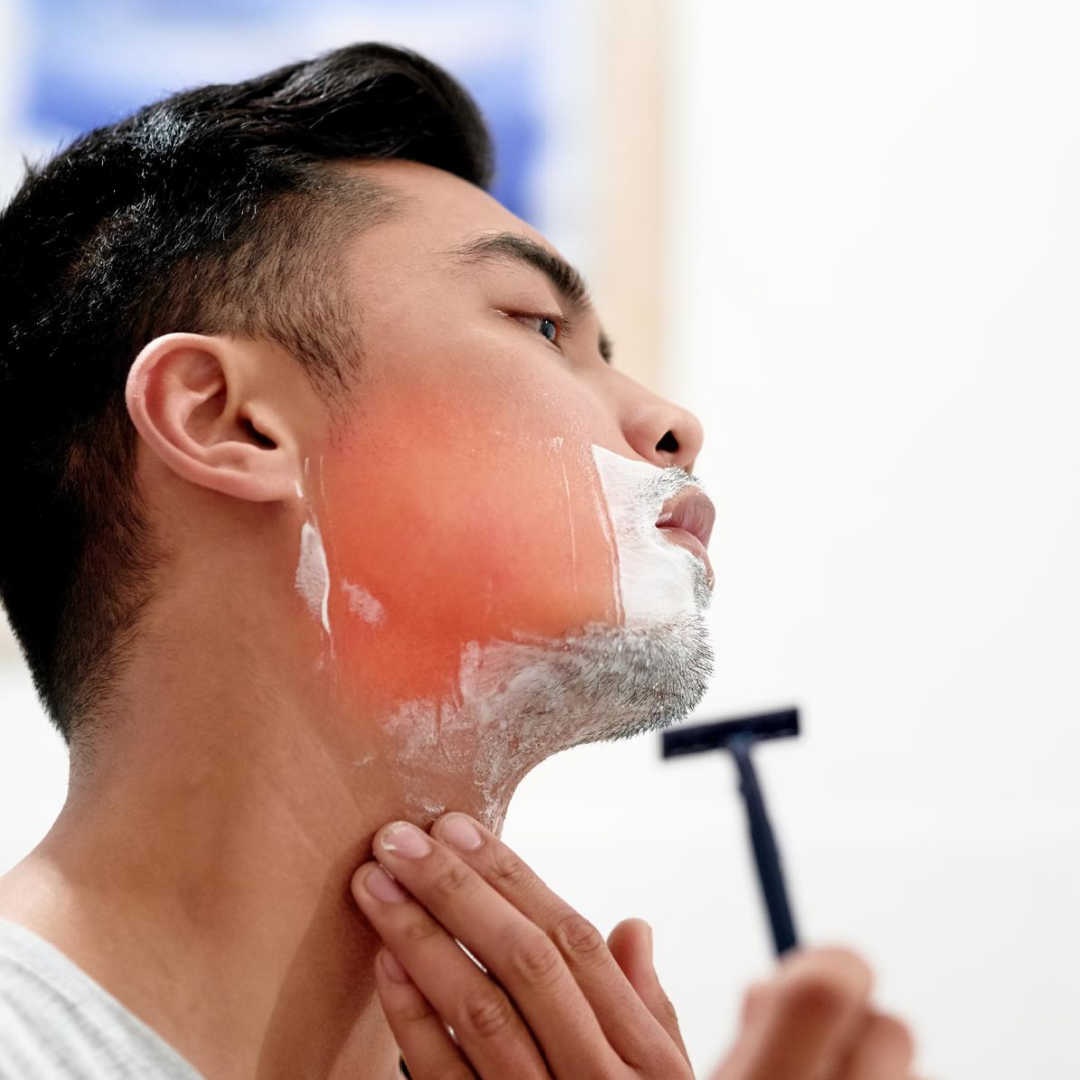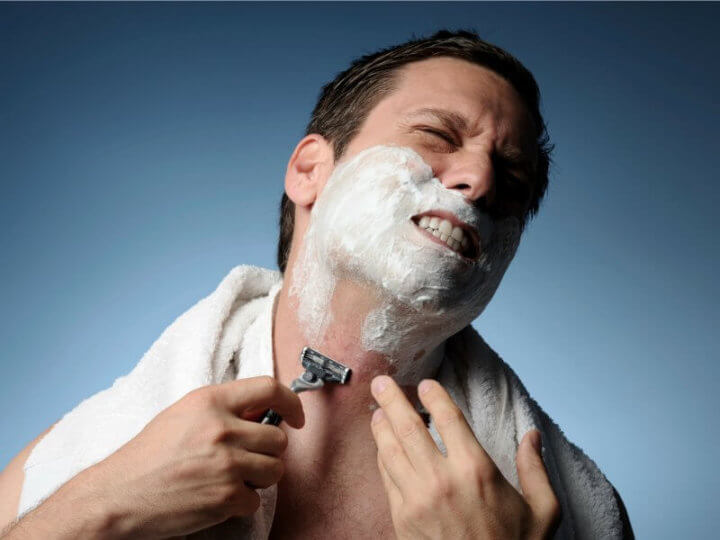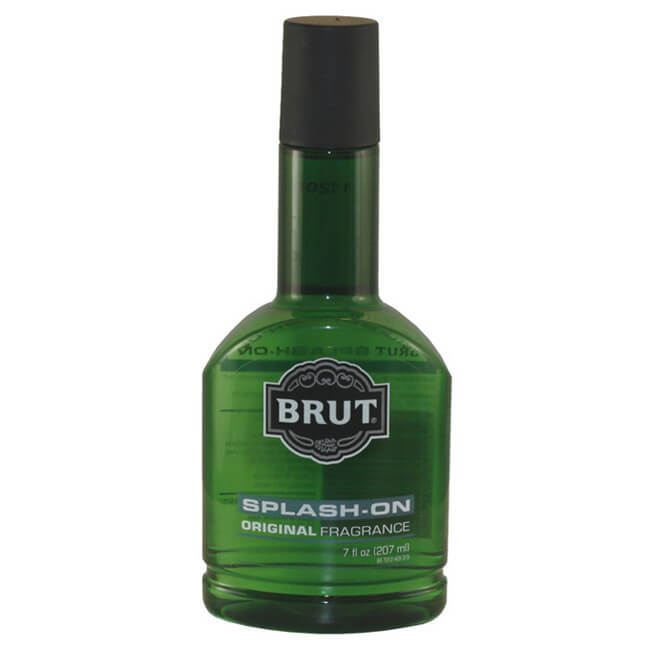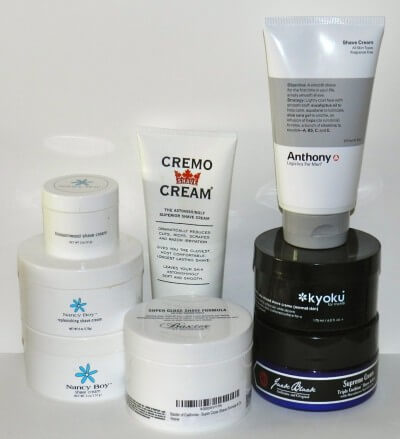
Shaving can be a daily ritual for many men, but it can also lead to skin irritation and discomfort. This common issue is not just an annoyance – razor burn, ingrown hairs, and redness affect millions of men worldwide.
But what causes these problems? In this blog post, I’ll identify the 5 common causes behind skin irritation after shaving and offer practical solutions to help you maintain smooth, healthy-looking skin.
Key Takeaways
- Using dull or dirty razor blades can cause skin irritation after shaving, resulting in painful and itchy red bumps known as razor burn.
- Overshaving, shaving against the grain, and applying too much pressure can also contribute to skin irritation by removing not just hair but also the topmost layer of skin, making your face more prone to sensitivity and inflammation.
- Shaving products containing alcohol and synthetic fragrances can do more harm than good to your skin by causing redness, itching, dryness or even acne breakouts. Opt for natural ingredients such as aloe vera or shea butter when choosing shaving creams or soaps.
Overall Key Takeaway: To prevent skin irritation after wet-shaving, always use fresh and sharp razor blades; use a razor with as few blades as necessary to achieve the desired result; shave in the direction of hair growth while avoiding excess pressure; choose fragrance-free products with natural ingredients that help soothe the skin (like aloe vera); apply moisturizer regularly post-shave to replenish lost moisture barriers on your sensitive facial areas.
Common Causes Of Skin Irritation After Shaving
Using dull or dirty razor blades can cause skin irritation after shaving. Overshaving, shaving against the grain, and applying too much pressure can also contribute to skin irritation.
Dull Or Dirty Razor Blades
One of the most common causes of skin irritation after shaving is using dull or dirty razor blades. A worn-out blade can tug at your facial hair rather than cleanly cutting through it, resulting in painful and itchy red bumps known as razor burn.
To avoid this issue, ensure that you are always using sharp and clean blades for each wet shave session. Not only will this help prevent skin irritation, but it also offers a smoother and more comfortable experience overall.
Keep in mind that even high-quality blades have a limited lifespan; replacing them regularly is essential to maintain optimal performance.
Overshaving

One common cause of skin irritation after shaving is overshaving, which occurs when you repeatedly shave the same area multiple times in a quest for a smoother finish.
It can also occur from using a multi-blade razor cartridge: a cartridge with five blades is like shaving an area five times (when you may only need one)!
This excessive shaving can lead to the removal of not just hair but also the topmost layer of skin, making your face more prone to razor burn and other types of irritation.
To avoid overshaving and its associated discomforts, always use a sharp razor–or razor cartridge with as few blades as necessary to achieve the result you’re looking for–as it minimizes the need for multiple passes across your skin. Additionally, apply an adequate amount of shaving cream that creates sufficient lubrication between your blade and skin.
Shaving Against The Grain
Shaving against the grain is a common cause of skin irritation after shaving, as it can lead to a higher risk of razor burn, ingrown hairs, and overall sensitivity. While this technique may provide a closer shave initially, it can also create tiny nicks or cuts on the surface of your skin and tug at hair follicles, causing inflammation.
To avoid these unpleasant effects while still achieving a smooth shave, try following the direction of your hair growth rather than going against it. Not only will this help reduce friction between your razor blade and skin but also minimize the chance for dermatological issues such as razor rash.
Additionally, consider incorporating lubricating products into your pre-shave routine for extra protection in reducing unwanted skin inflammation.
Applying Too Much Pressure
One of the most common causes of skin irritation after shaving is applying too much pressure while shaving. Pressing down too hard on your skin can lead to tiny nicks and cuts, which may cause discomfort and irritation, especially in sensitive areas like the neck or underarms.
To avoid this issue, it’s important to use a light hand when shaving. Let the blades do the work for you, and don’t push down on your razor excessively.
If you find that you’re still experiencing skin irritation despite taking these precautions, consider switching up your shaving technique or tools. Using a different type of razor or trying a pre-shave oil or cream could make all the difference in preventing irritation caused by excessive pressure during shaving.
Alcohol Or Fragrance In Shaving Products

Shaving products that contain alcohol and synthetic fragrances can do more harm than good to your skin. These ingredients are known irritants and can cause redness, itching, and even acne breakouts.
To avoid these issues, it’s best to opt for shaving creams or soaps that contain natural ingredients such as aloe vera or shea butter. These ingredients help soothe and hydrate the skin while providing a smooth shave without causing irritation.
Another way to minimize irritation after shaving is by avoiding aftershave products containing alcohol. Instead, opt for moisturizing balms that absorb quickly into the skin without leaving behind a greasy residue.
Overall, when it comes to skincare after wet shaving, less is often more! Stick with products tailored specifically for sensitive skin types with gentle ingredients instead of opting for fancy scents or harsh chemical additives – this approach will keep you looking fresh-faced all day long!
Tips To Help Prevent Skin Irritation After Shaving
Use fresh and sharp razor blades to avoid pulling hairs and causing skin irritation. Shave in the direction of hair growth, as shaving against the grain can cause ingrown hairs.
Use Fresh And Sharp Razor Blades
One of the most common causes of skin irritation after shaving is using dull or dirty razor blades. When you use a dull blade, it can cause trauma to the skin, resulting in razor burn and ingrown hairs.
To prevent this from happening, make sure to always use fresh and sharp razor blades when wet shaving. You can even replace your blades after every few shaves for optimal results.
Not only will this help reduce skin irritation, but it will also give you a clean and close shave without having to apply too much pressure.
Shave In The Direction Of Hair Growth
Shaving in the direction of hair growth is a crucial technique that can help prevent skin irritation after shaving. When you shave against the grain, it causes the razor to tug at hairs and pull them out of the follicle, which can cause ingrown hairs and razor bumps.
To properly shave with the grain, start by mapping out the direction of your facial hair growth using gentle strokes. Then apply a shaving cream without any fragrances. Next, hold your razor at a 30-degree angle and move it in gentle strokes along with the grain.
Finally, rinse off any leftover shaving cream from your face and pat dry before applying moisturizer to hydrate and soothe your freshly shaved skin.
Use Shaving Cream Without Fragrances

When it comes to preventing skin irritation after shaving, using the right products can make a big difference. One important tip is to use shaving cream without fragrances.
Many shaving creams and gels contain alcohol or fragrance, which can cause dryness and irritation. Instead, opt for a fragrance-free shave cream that contains natural ingredients like emollients and lubricants.
In addition to choosing the right shave cream, it’s also important to take other steps to protect your skin while you’re grooming. For example, be sure to moisturize regularly with an alcohol-free product that won’t further irritate your skin.
And consider investing in a high-quality razor with sharp blades that won’t tug at hairs or create ingrown hairs on sensitive areas like the neck and chin.
Apply Moisturizer After Shaving
After shaving, your skin can feel dry and irritated. This is why it’s important to moisturize your skin after shaving. Moisturizing helps replenish the moisture barrier that gets stripped during shaving, preventing irritation and razor burn.
Aftershave balms and lotions are great options since they hydrate your skin while also helping to prevent ingrown hairs, redness, and bumps. You should also avoid using heavy fragrances in aftershaves since this can cause further irritation to sensitive skin.
Applying a light moisturizer or oil onto damp skin will help keep your face looking healthy and feeling comfortable all day long.
Conclusion
In conclusion, skin irritation after shaving is a common issue for men who wet shave. Understanding the causes of razor burn, razor bumps, and other types of skin irritation can help prevent discomfort and keep your skin looking smooth.
By using fresh razor blades, shaving in the direction of hair growth, avoiding excess pressure, and choosing fragrance-free products, you can reduce the risk of post-shave inflammation and sensitivity.
Remember to take care of your skin after shaving as well by applying moisturizer or aftershave balm to soothe any potential redness or itchiness.
